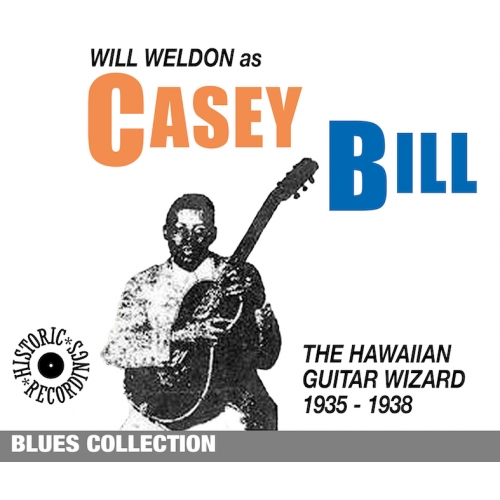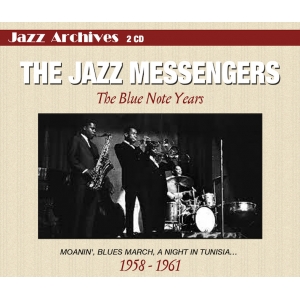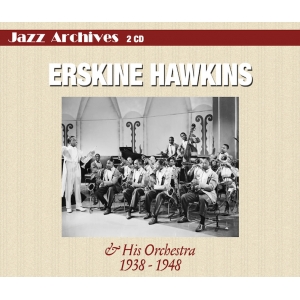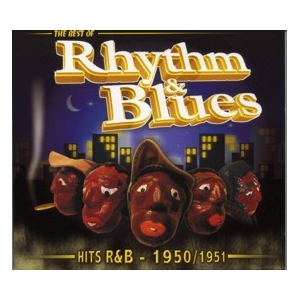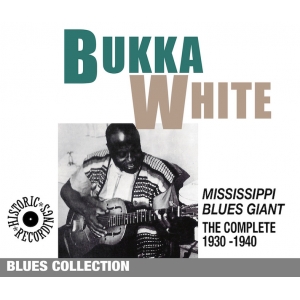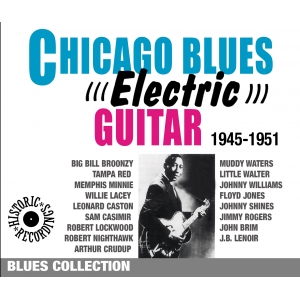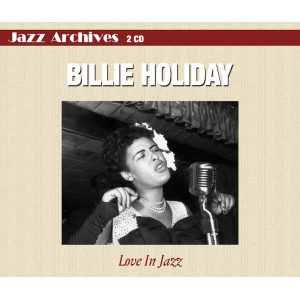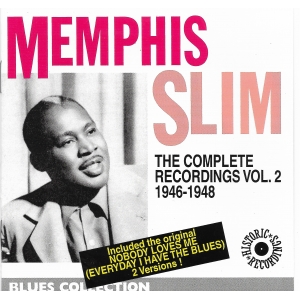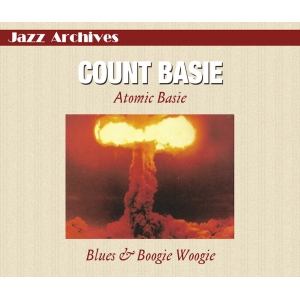CASEY BILL
VOUS RECEVREZ UN BON D'ACHAT 10% À PARTIR DE 40 € DE COMMANDE
(William Weldon)
THE HAWAIIAN GUITAR WIZARD 1935 - 1968
Les TITRES
1 SOMEBODY CHANGED THE LOCK OF MY DOOR
2 MY STOVE DON'T WORK
3 ARLENA
4 CAUGHT US DOING IT
5 W.P.A. BLUES
6 I GOT A LETTER THIS MORNING
7 HAS MY GAL BEEN HERE
8 CASEY BLUES
9 YOU JUST AS WELL LET HER GO
10 BIG BILL BLUES
11 THE BIG BOAT
12 CAN'T YOU REMEMBER?
13 WE GONNA MOVE
14 BACK DOOR BLUES
15 I'VE BEEN TRICKED
16 GUITAR SWING
17 SPIDER BLUES
18 YOUI SHOULDN'T DO THAT
19 WORRIED ABOUT THAT WOMAN
20 GO AHED, BUDDY
21 CHRISTMAS BLUES
22 NEW ROUND AND ROUND
23 WAY DOWN IN LOUISIANA
24 I BELIEVE YOU'RE CHEATIN' ON ME
CASEY BILL
Will Weldon, dit Casey Bill, personnifie un certain mystère qui entoure le blues, sa définition, son milieu et son histoire, comme beaucoup de ses interprètes, chantres énigmatiques de sensations bizarres dont on ne sait d'où ils viennent, quels ennuis vont-ils attirer et quand ils repartiront. Ce caractère insaisissable du blues et des bluesmen, en dépit des travaux de plus en plus fouillés des chercheurs, demeure, et probablement demeurera. C'est une force et une faiblesse et l'une renvoie à l'autre. Son manque de "structures" éloigne toujours le blues des sources de profit dont il ne reçoit que les miettes, mais il conserve, mieux que toutes les autres formes qui évoluent souvent en se diluant, son authenticité et son autonomie, son pouvoir et sa résistance. C'est pourquoi sa survie témoigne toujours, à côté de la musique religieuse qui assure la cohérence sociale de sa communauté, de l'identité de l'homme noir américain.
Will Weldon, dit Casez Bill, est probablement le bluesman le plus important dont on ne sait pratiquement rien. Celui qui s'est fait connaître à Chicago dans les années 30 et dont parle Big Bill Broonzy (1) serait né à Pine Bluff, dans l'Arkansas, le 10 juillet 1909, c'est-à-dire à une distance très raisonnable de Memphis où Will Weldon s'est installé, sans doute après la première guerre. Ce Weldon, au cours des années 20, parcourt le Sud au sein de medicine shows et, vers 1926, est engagé par Will Shade en tant que guitariste-chanteur du Memphis Jug Band avec lequel il grave ses premières faces -ce sont également les premières d'un groupe en route vers le succès- en février 1927. Il participe aux quatre séances suivantes de la formation en 1927 et 1928 ; son collègue Vol Stevens, mandoliniste du jug band, et lui-même étant invités, en duo, à enregister deux titres chacun sous leur propre nom le 20 octobre 1927. A cette époque Will Weldon est, dit-on, marié (peut-être pas très officiellement) avec la chanteuse et guitariste Lizzie Douglas, la future Memphis Minnie, sensiblement plus âgé que lui -il n'aurait que 17 ou 18 ans.
Ici s'achève la première carrière phonographique de Will Weldon à moins que ce ne soit la carrière du premier Will Weldon. En effet, plusieurs spécialistes, Stephen Calt en tête (2), ont du mal à établir la conjonction entre le sobre accompagnateur du Memphis Jug Band et l'étincelant virtuose que sera Casey Bill. Et si la voix, assez forte et sans grandes nuances, possède un air de ressemblance, elle est trop peu caractéristique pour constituer une confirmation ou une infirmation. Quant au visage!... Il ne demeure que cette image publicitaire grossièrement reproduite du Memphis Jug Band d'où on a isolé la silhouette de ce qu'on croit être Will Weldon. Car aucune photographie n'est connue du Casey Bill qui réalisera pourtant quatorze séances d'enregistrements sous son nom, certaines étalées sur deux jours, entre 1935 et 1938 -65 faces-, signe révélateur du peu de considération que le business, en l'occurence les labels Bluebird et Vocalion, manifestait pour ses "artistes", surtout lorsqu'il s'agissait de bluesmen.
Dans le doute -j'avoue que je penche pour un seul et même bonhomme mais ne me demandez pas pourquoi- reprenons comme si de rien était. Will Weldon, vers 1930, se retrouve à Kansas City où ses activités musicales ne doivent pas constituer ses seuls revenus. C'est de là que vient l'origine de son surnom : les initiales de Kansas City, K.C. en version contractée, deviennent "Casey" par transcription phonétique. En 1933, Casey Bill est à Chicago et ses premières connaissances s'appellent Big Bill Broonzy et Bumble Bee Slim. Il rencontre égalemnt Peetie Wheatstraw, peut-être à St-Louis, qu'il accompagne sans doute assez régulièrement et avec qui il va participer à une première séance chicagoane le 25 mars 1935 : quatre titres chantés par Wheatstraw, quatre par Kansas City Bill Weldon comme il est inscrit sur les étiquettes où figure parfois la mention Hawaiian Guitar Wizard (sorcier de la guitare hawaïenne). C'est durant ces mystérieuses années écoulées que Weldon aurait adopté la guitare hawaïenne, non seulement l'instrument, mais également la technique, le jeu et le style, en s'inspirant soit directement des musiciens hawaïens dont l'exotisme était alors fort apprécié aux Etats-Unis, soit par l'intermédiaire des guitaristes de western swing qui avaient transposé cette technique du slide sur leur steel guitars. Il semble en revanche peu influencé par les bluesmen du Mississippi qui utilisent le bottleneck, ainsi que le résume clairement Gérard Herzhaft dans son encyclopédie : "S'exprimant dans le style classique des guitaristes hawaïens très en vogue au début du siècle, il a développé une approche du blues et du ragtime profondement personnelle. La plupart de ses titres se signalent par une exubérance, un rythme endiablé, une joie de vivre, une technique brillante et originale qui le situent beaucoup plus dans la lignée des guitaristes texans de western swing comme Leon McAuliffe et Strozer Quinn que dans celle des adeptes noirs du bottleneck" (3).
Son style "flamboyant" est également très différent de ceux d'un Kokomo Arnold ou de l'autre guitar wizard, Tampa Red (qu'on cherche d'ailleurs à concurrencer), qui a réalisé une synthèse à partir de différents apports (cf. EPM Blues Collection 157892). Ici, c'est plutôt une transposition d'une technique musicale dans le blues qu'a effectué Casey Bill, comme l'avait noté pertinemment Jacques Morgantini : "Cette guitare métallique, probablement une National équipée d'un manche dit hawaïen, n'était pas une vraie guitare hawaïenne, mais Casey Bill faisait parfois étrangement sonner son instrument comme une guitare hawaïenne. Et ce n'est pas une mince tour de force de sa part que d'avoir pû marier la couleur hawaïenne à la densité, à l'émotion du blues" (4).
La sonorité cristalline, lumineuse que Welson obtient de sa steel guitar s'ajoute à une remarquable intelligence de jeu. Il "attaque" la note un peu avant le temps puis la maintient, la module ou l'altère par un glissando parfaitement maîtrisé, ce qui procure une grande dynamique rythmique et favorise le swing. Il parsème aussi souvent son discours musical de grappes de notes jetées en bouquet qui stimulent l'attention de l'auditeur. De plus, il joue avec une très grande justesse ce qui, avec le moyen d'expression qu'il s'est choisi et la guitare probablement posée à plat sur les cuisses, témoigne à la fois d'une grande maîtrise instrumentale et d'une oreille également très juste. Son répertoire, largement au service de son style original, déborde très largement le domaine du blues pur et aborde la plupart des musiques populaires à la mode durant les années 30 : country (Caught Us Doing It), hokum (You Shouldn't Do Tath) et jive music (Has My Gal Been Here, You Just As Well Let Her Go, Round And Round) dans lesquelles sa virtuosité et son drive font merveille, tant sur tempos ultra rapides (The Big Boat, Back Door Blues) que médiums "relax" (Go Ahead Buddy et le déjà moderne I Believe You're Cheatin' On Me); et avec ses Brown Bombers Of Swing, il s'aventure même dans le genre rhythm vocal quartets à la manière des Spirits Of Rhythm, Cats And The Fiddles ou Ink Spots première manière.
Musicien complet et brillant, Casey Bill a donné quelques-unes des ses plus poignantes interprétations dans des blues de formes plus classiques où, à l'originalité de son accompagnement, s'ajoute l'intérêt de textes bien tournés comme dans W.P.A. Blues, constatation plutôt ironique des "bienfaits" du New Deal et de la politique des grands travaux organisée par la Work Progress Administration.
"Parolier de grand talent, précise Jean-Claude Arnaudon, ses chansons fourmillent d'allusions directes ou détournées au milieu social de son époque" (5). Chanteur, il adopte volontiers cette neutralité gouailleuse et désabusée qui a fait le succès de Peetie Wheatstraw et qu'on retrouve chez Big Bill et de nombreux bluesmen urbains d'avant-guerre. La qualité de ses blues a été récompensée par une large postérité (même si leur auteur a été oublié!) : Somebody Changed The Lock On My Door a été repris entre autres par Louis Jordan, Big Bill Broonzy, Champion Jack Dupree... et Outskirts Of Town est devenu l'un des plus grands classiques du blues grâce aux versions de Jimmy Rushing avec Count Basie, Jimmy Lunceford, Jazz Gillum, Big Bill, Louis Jordan, Ray Charles et tutti quanti.
Après la "première" en compagnie de Peetie Wheatstraw, Will Weldon va participer, cette fois sous le surnom de Casey Bill, à la bagatelle de douze séances d'enregistrement en tant que leader en l'espace de deux ans (entre le 31 octobre 1935 et le 28 octobre 1937), ce qui en dit long sur sa fulgurante mais éphèmère popularité. Parfaitement accompagné par des musiciens du calibre de Black Bob, de Tampa Red, de Charlie McCoy (solos sur The Big Boat, Can't You Remember?, New Round And Round), Big Bill Broonzy (solo sur Back Door Blues)... Casey Bill est aussi le catalyseur des Washboard Rhythm Kings (formation homonyme d'un autre washboard band) et, à trois reprises, des Hokum Boys. Il accompagnera également sur disques Blind Darby, son ancienne conjointe Memphis Minnie, Leroy Henderson, Bumble Bee Slim et Arnett Nelson.
Casey Bill grave ses quatre derniers morceaux à la guitare électrique au cours d'une série de séances organisées à Aurora (Illinois) entre le 16 et le 19 décembre 1938 pour, successivement, Tampa Red, lui-même, Washboard Sam, Jazz Gillum, Speckled Red, Sonny Boy Williamson, Willie Hatcher, Robert Nighthawk et Walter Davis, ce qui a fait dire à certains discographes que son pianiste était Blind John Davis (accompagnateur de Tampa Red) et à d'autres qu'il s'agissait de Joshua Altheimer (accompagnateur de Sam et de Gillum). Ma réserve quant à l'identification du fameux pianiste inconnu rejoint celle de Morgantini (4) et, sous toute réserve, j'attribuerais bien le jeu fantasque, peu technique, son côté "bastringue" et ses "pompes" à Speckled Red.
Après cette date, l'existence de Will Weldon s'abîme dans les mystères les plus profonds. On pense qu'il a émigré sur la Côte Ouest où, pendant les années 40, il aurait enregistré des soundtracks pour le cinéma -quel amateur cinéphile pourrait en dénicher des traces? C'est bien en Californie que le situe Big Bill (1) lorsqu'il écrit son livre vers 1954/55, mais plus personne ne l'aurait localisé depuis à l'exception du bluesman Ted Bogan qui affirme l'avoir rencontré à Détroit en 1968, vivant totalement en dehors des circuits musicaux. Trente ans et d'aussi minces informations, c'est malheureusement tout ce que nous possédons sur ce grand bluesman qui, depuis, s'est sans doute éteint en emportant ses secrets.
Jean Buzelin
Hormis les deux titres de 1927, trop "hors sujet", et la séance inaugurale de mars 1935 à cause de la très faible qualité sonore des disques dont nous disposions, la présente sélection essaie de parcourir l'ensemble de l'œuvre enregistrée par Casey Bill dans toute sa diversité, sa richesse et son intérêt musical. Nous tenons à remercier Etienne Peltier qui a bien voulu nous prêter quelques faces rares.
(1) W.L.C. Broonzy & Yannick Bruynoghe, Big Bill Blues (Ludd, Paris, 1987).
(2) Stephen Calt, notes de pochette, Bottleneck Guitar Trendsetters (Yazoo 1049).
(3) Gérard Hershaft, Encyclopédie du Blues (Seghers, Paris, 1990).
(4) Jacques Morgantini, notes de pochette, Casey Bill Weldon (RCA PM42050)
(5) Jean-Claude Arnaudon, Dictionnaire du Blues (Filipacchi, Paris, 1977).
Will Weldon, otherwise known as Casey Bill, is the very personification of a certain mystery that surrounds the blues and many of its performers, those enigmatic purveyors of poetry and song who come we know not whence, who head we know not where. The elusive nature of the blues and bluesmen remains with us to this day, and probably always will remain, resolutely resisting the increasingly thorough work of an army of able researchers. Which is both a weakness and a strength. A lack of any “structure” constantly distances the blues from the world of gain, from which it receives no more than the crumbs; yet this very isolation protects the blues from the dilution that evolution so often brings, helping the form retain its authenticity and independence, its power and durability. Which is why the survival of the blues, alongside the religious music that cements a whole community, continues to bear testimony to the identity of America’s blacks.
Will Weldon, otherwise known as Casey Bill, is probably the most important bluesman about whom we know virtually nothing. The man who established himself in Chicago in the 1930s, and of whom Big Bill Broonzy spoke [1], was said to have been born in Pine Bluff, Arkansas, on 10 July 1909. Which is a very reasonable distance from Memphis, where a Will Weldon went to live, probably after the First World War. During the 1920s, this Weldon travelled the South with a medicine show, and around 1926 joined Will Shade’s Memphis Jug Band as singer-guitarist. It was with this group that he cut his first records — also the group’s first in a successful recording career — in February 1927. He then took part in the band’s next four sessions, in 1927 and 1928. During this same period, on 20 October 1927, he and his colleague Vol Stevens, the jug band’s mandolin-player, were invited to record two sides each under their own names. At this time, Will Weldon, they say, was married (perhaps not very officially) to singer-guitarist Lizzie Douglas, the future Memphis Minnie, who would thus have been considerably older than her 17 or 18-year-old “husband”.
Thus ends the first part of the recording career of Will Weldon, unless, of course, we happen to be looking at a first Will Weldon. Indeed, many specialists, Stephen Calt foremost among them [2], find it difficult to reconcile the sober work of the Memphis Jug Band sideman with that of the sparkling virtuoso who would later call himself Casey Bill. And, although the rather powerful, unsubtle voice does bear some resemblance, it is not distinctive enough for us to confirm or contradict whether we are in fact listening to the same man. As for his appearance, we have no more to go on than the one publicity photograph of the Memphis Jug Band, on which we see the silhouette of a musician believed to be Will Weldon. Amazingly, not a single photograph exists of the Casey Bill Weldon who undertook no fewer than 14 recording sessions under his own name (some extending over two days) between 1935 and 1938, producing a total of 65 sides! From which we can judge the importance the so-called business people of the Bluebird and Vocalion labels attached to their artists, especially when those artists happened to be bluesmen.
In this state of doubt, I am inclined to believe we are here talking of one and the same man, but please don’t ask me to substantiate that! Whatever, around 1930 our Will Weldon found himself in Kansas City, hence his nickname Casey, a phonetic transcription of the initials K.C.. By 1933, Casey Bill had landed in Chicago, where his earliest contacts were Big Bill Broonzy and Bumble Bee Slim. But he also got to know Peetie Wheatstraw, perhaps in St. Louis, and probably accompanied him on a fairly regular basis. It was with Peetie that he took part in his first Chicago recording session, on 25 March 1935, a session that produced four titles by Wheatstraw and another four by Kansas City Bill Weldon, for that was the name given on the labels of the original 78s, sometimes with the added mention “Hawaiian Guitar Wizard”.
Weldon is reported to have adopted the Hawaiian guitar during those mysterious early years: not only the instrument itself but also the style and the technique, influenced either by the Hawaiian musicians then enjoying such immense popularity in America or by the intermediary of the “western swing” guitarists who had adapted the “slide” technique to their steel guitars. On the other hand, he seems to have been little swayed by the Mississippi bluesmen who used the bottleneck. All of which has been clearly summed up by Gérard Herzhaft in his blues encyclopaedia [3]: “Expressing himself in the classic Hawaiian-guitar style so fashionable in the early part of the century, he developed a profoundly personal approach to blues and ragtime. Most of his recordings display an exuberance, an intense rhythm, a joie de vivre and a brilliant, original technique that place him much more in the lineage of Texan western-swing guitarists such as Leon McAuliffe and Strozer Quinn than that of black exponents of the bottleneck style.”
Casey Bill’s flamboyant style is also very different from that of either Kokomo Arnold or Tampa Red (that other guitar wizard, and the man with whom they were all seeking to compete). Whereas Tampa had come up with a synthesis of many different influences (cf. EPM Blues Collection, 157892), Casey Bill had, rather, adapted another quite specific musical technique to the blues, as Jacques Morgantini has pertinently pointed out [4]: “This steel guitar, probably a National equipped with a so-called Hawaiian finger-board, was not a true Hawaiian guitar, even though Casey Bill possessed the ability to make it sound strangely like one. And it was certainly no mean feat to have succeeded in combining the colourful Hawaiian sound with the raw emotion of the blues.”
The bright, crystalline sound Weldon manages to extract from his steel guitar serves a manner of playing that reveals remarkable musical intelligence. He attacks a note just before the beat, then holds it, modulating it or altering it with a perfectly controlled glissando, a method that generates enormous rhythmic tension and swing. He also likes to punctuate certain lines by unleashing whole clusters of notes that shock the listener into attention. What’s more, he is always rigorously in tune, something that, given his chosen style and the fact he probably played with the guitar laid flat on his knees, bears testimony to his technical mastery and sharpness of ear.
His repertoire, in line with his highly original style, extends well beyond the field of pure blues, encompassing as it does most forms of popular music enjoying a vogue during these 1930s: country (Caught Us Doing It), hokum (You Shouldn’t Do That) and jive music (Has My Gal Been Here?, You Just As Well Let Her Go, Round And Round). On all of which his virtuosity and sheer drive are a marvel, whether at very fast tempos (The Big Boat, Back Door Blues) or at more relaxed pace (Go Ahead Buddy and the already modern I Believe You’re Cheatin’ On Me). With his Brown Bombers of Swing he even ventures into “rhythm vocal quartet” territory, in the manner of the Spirits Of Rhythm, the Cats And The Fiddles or the early Ink Spots.
A musician as brilliant as he is complete, Casey Bill has given some of his most poignant performances on more classic blues material, where the originality of his playing has been matched by the quality of his lyrics. Witness W. P. A. Blues, a somewhat ironic account of the benefits of the New Deal and the public-works policy pursued by the Work Progress Administration. “An author of great talent,” writes Jean-Claude Arnaudon [5], “he fills his songs with direct or oblique allusions to the social conditions of his day.” As a singer, he readily adopts that stance of deriding, disillusioned neutrality so dear to Peetie Wheatstraw, a trait also found in the work of Big Bill Broonzy and numerous other urban bluesmen of the prewar era. The quality of Casey Bill’s blues has been largely rewarded by posterity (even though the composer himself may have been forgotten!): Somebody Changed The Lock On My Door has been sung by artists as diverse as Louis Jordan, Big Bill Broonzy and Champion Jack Dupree; and Outskirts Of Town has become one of the great blues classics, thanks to the attentions of Jimmy Rushing (with Count Basie), Jimmie Lunceford, Jazz Gillum, Big Bill, Louis Jordan, Ray Charles and a whole host of others.
Following his début session with Peetie Wheatstraw, Will Weldon, now under the name of Casey Bill, would undertake no fewer than 12 sessions of his own over the coming two years (31 October 1935 to 28 October 1937). Which speaks chapters for how big an artist he then was, no matter how ephemeral his success. Beautifully accompanied on his own dates by musicians of the calibre of Black Bob, Tampa Red, Charlie McCoy (who solos on The Big Boat, Can’t You Remember? and New Round And Round) and Big Bill Broonzy (who solos on Back Door Blues), Casey Bill was also the catalyst of the Washboard Rhythm Kings and, on three occasions, of the Hokum Boys. In addition to which, he provided recording-date backing for Blind Darby, his ex-wife Memphis Minnie, Leroy Henderson, Bumble Bee Slim and Arnett Nelson.
Casey Bill cut his last four pieces on electric guitar during a series of sessions in Aurora, Illinois, between 16 and 19 December 1938, organised to feature a long string of blues artists, in order of recording: Tampa Red, himself, Washboard Sam, Jazz Gillum, Speckled Red, Sonny Boy Williamson, Willie Hatcher, Robert Nighthawk and Walter Davis. This has led certain discographers to contend that his pianist was Blind John Davis (accompanist to Tampa Red), while others claim it was Joshua Altheimer (accompanist to Washboard Sam and Jazz Gillum). My reservations on the identity of this famous unknown pianist go along with those of Jacques Morgantini [4], and — in view of the rather quirky, technically simple playing, with its touch of brashness and pumping left hand — I cautiously venture to suggest it is Speckled Red.
After this all-star date, the person of Will Weldon seems to have evaporated into oblivion. It is believed he moved to the West Coast, where, during the 1940s, he is said to have recorded soundtrack music for films. Is there any blues enthusiast and cinema expert out there who could shed light on this theory? Big Bill certainly talked of Weldon’s being in California when dictating material for his book in 1954-55; but nobody seems actually to have come across him, with the lone exception of bluesman Ted Bogan, who claims to have met him in Detroit in 1968. According to Bogan, Weldon was then living totally outside music. Which all adds up to a terribly meagre amount of information over a period of more than 50 years! Especially when you consider how big a reputation this great bluesman enjoyed, a bluesman who has by now perhaps left us for good, taking his secrets with him.
Adapted by Don Waterhouse from the French text of
Jean Buzelin
Except for the omission of the two 1927 titles (due to their doubtful paternity) and of the inaugural session of March 1935 (due to the very poor sound quality of the records at our disposal), the present selection seeks to cover all aspects of the recorded work of Casey Bill. We should like to thank Etienne Peltier for the loan of a number of rare records.
[1] W.L.C. Broonzy & Yannick Bruynoghe, Big Bill Blues (Ludd, Paris, 1987).
[2] Stephen Calt, sleeve notes, Bottleneck Guitar Trendsetters (Yazoo LP 1049).
[3] Gérard Herzhaft, Encyclopédie du Blues (Seghers, Paris, 1990).
[4] Jacques Morgantini, sleeve notes, Casey Bill Weldon (RCA LP: PM 42050).
[5] Jean-Claude Arnaudon, Dictionnaire du Blues (Filipacchi, Paris, 1977).

